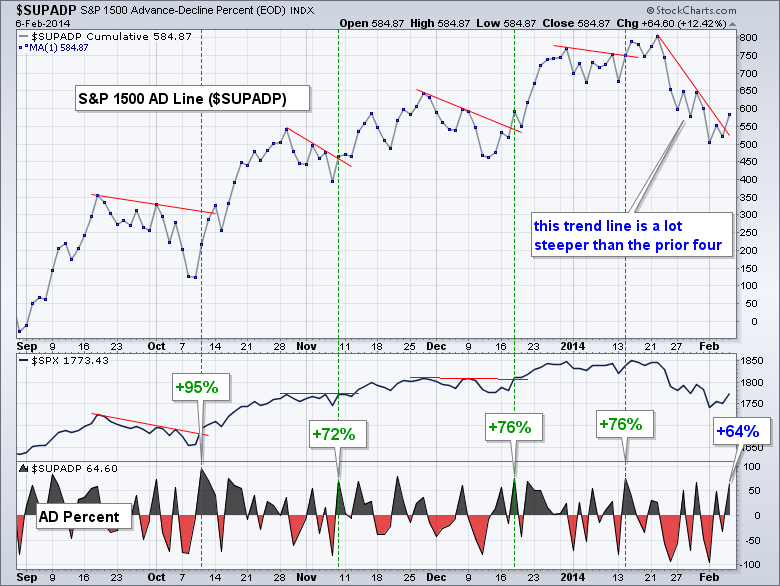Stocks got their oversold bounce with a decent advance, but small-caps lagged and breadth could have been stronger. SPY fell sharply on Monday and was down over 5% year-to-date at the time. The ETF firmed for two days and then bounced with its biggest 1-day advance of the year, which is a whopping 24 trading days old. This bounce alleviates oversold conditions just in time for the employment report. I have my concerns with the quality of this bounce because the Russell 2000 ETF (IWM) advanced just .70% and lagged pretty bad. Also note that the S&P 1500 AD Line ($SUPADP) only reached +64%, which is well short of the fuel needed to reverse a correction. The chart below shows the S&P 1500 AD Line ($SUPADP) in the main window, the S&P 500 in the middle window and AD Percent in the lower window. The AD Line broke above the red trend line, but this trend line is much steeper than the prior four, which marked corrections. This indicates that selling pressure was exceptionally strong during this correction. Second, notice that prior breakouts occurred with AD Percent hitting at least +72%. Thursday's +64% reading falls a little short and suggests that the rally was not all that broad. Perhaps traders were holding back because of the employment report.
**This chart analysis is for educational purposes only, and should not
be construed as a recommendation to buy, sell or sell-short said securities**
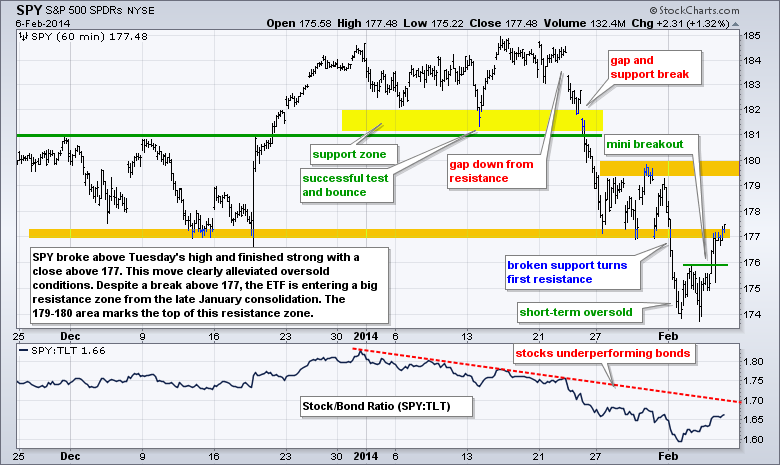
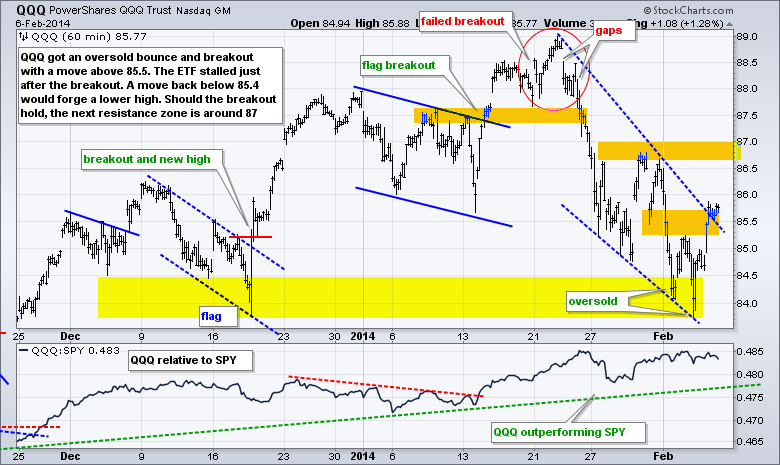
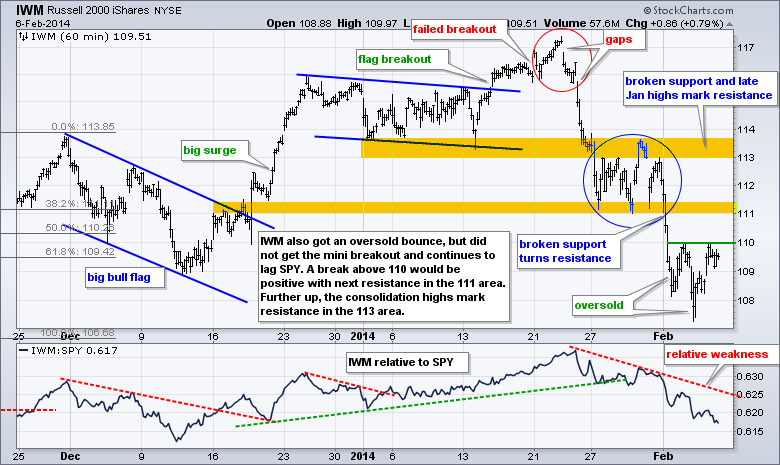
**************************************************************
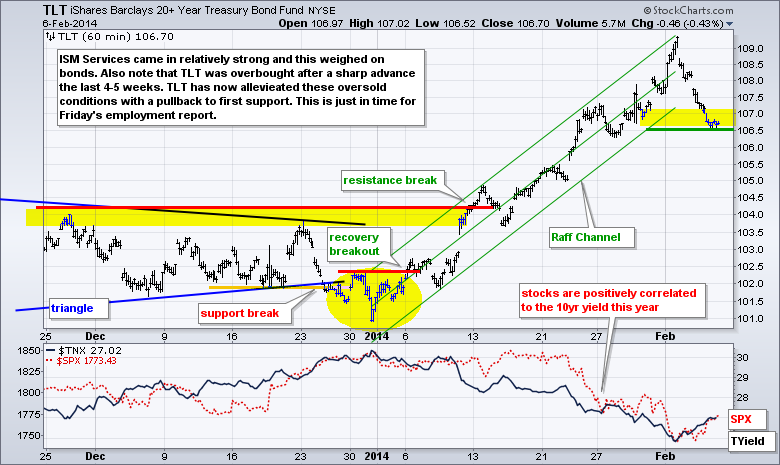
**************************************************************

**************************************************************
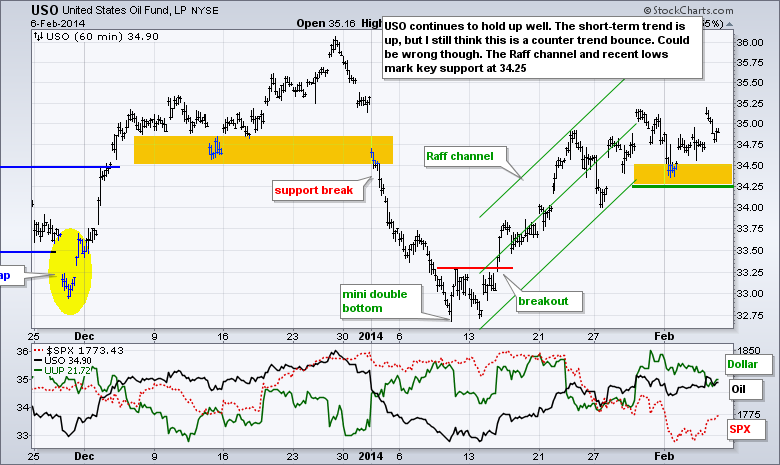
**************************************************************
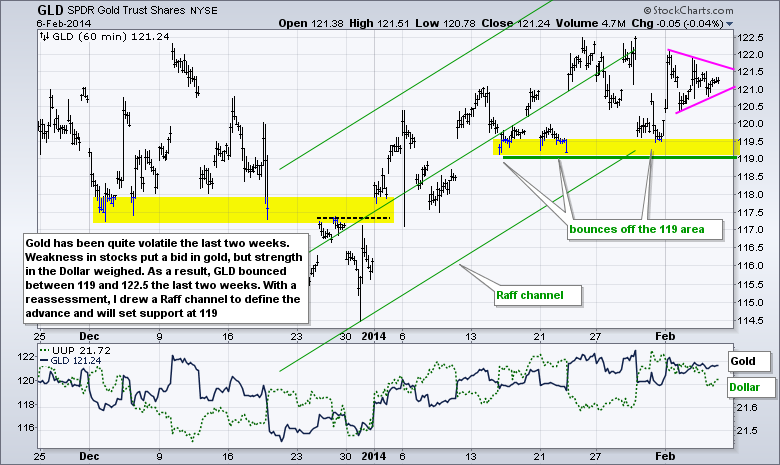
***************************************************************
Key Reports and Events (all times Eastern):
Fri - Feb 07 - 08:30 - Employment Report
Tue - Feb 11 - 08:30 - Yellen Testimony
Charts of Interest: Tuesday and Thursday
This commentary and charts-of-interest are designed to stimulate thinking. This analysis is
not a recommendation to buy, sell, hold or sell short any security (stock ETF or otherwise).
We all need to think for ourselves when it comes to trading our own accounts. First, it is
the only way to really learn. Second, we are the only ones responsible for our decisions.
Think of these charts as food for further analysis. Before making a trade, it is important
to have a plan. Plan the trade and trade the plan. Among other things, this includes setting
a trigger level, a target area and a stop-loss level. It is also important to plan for three
possible price movements: advance, decline or sideways. Have a plan for all three scenarios
BEFORE making the trade. Consider possible holding times. And finally, look at overall market
conditions and sector/industry performance.

